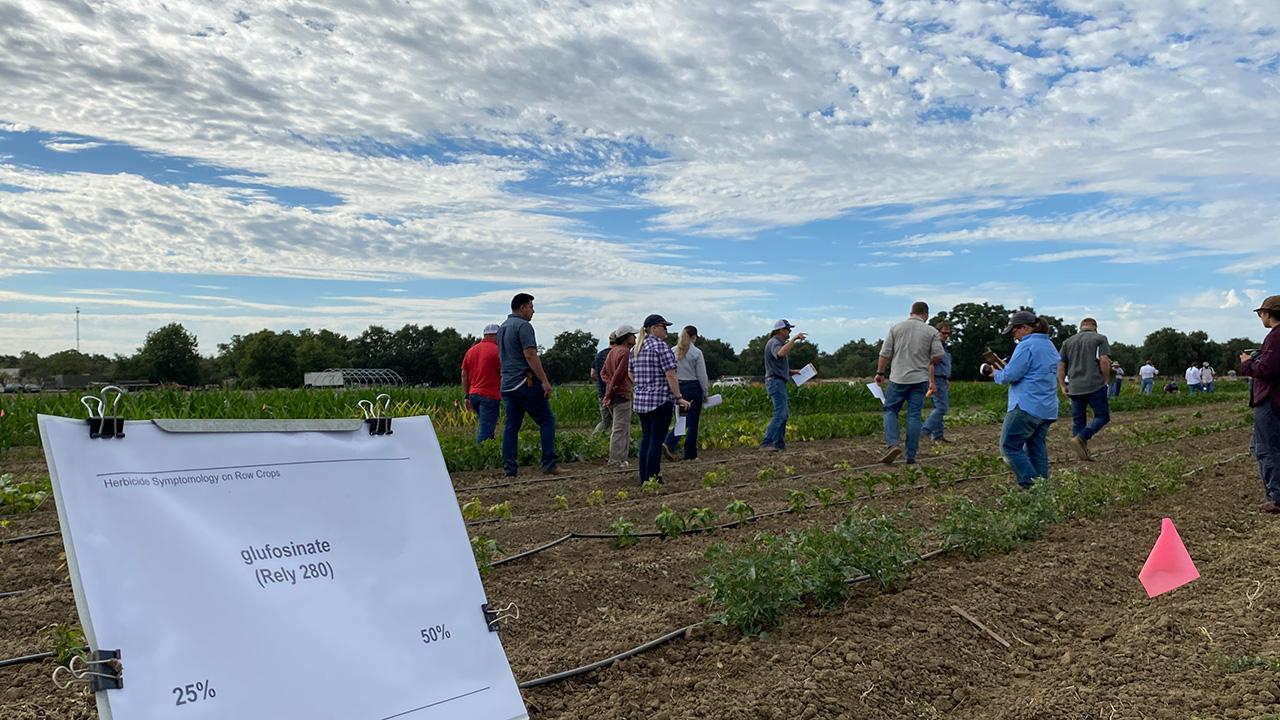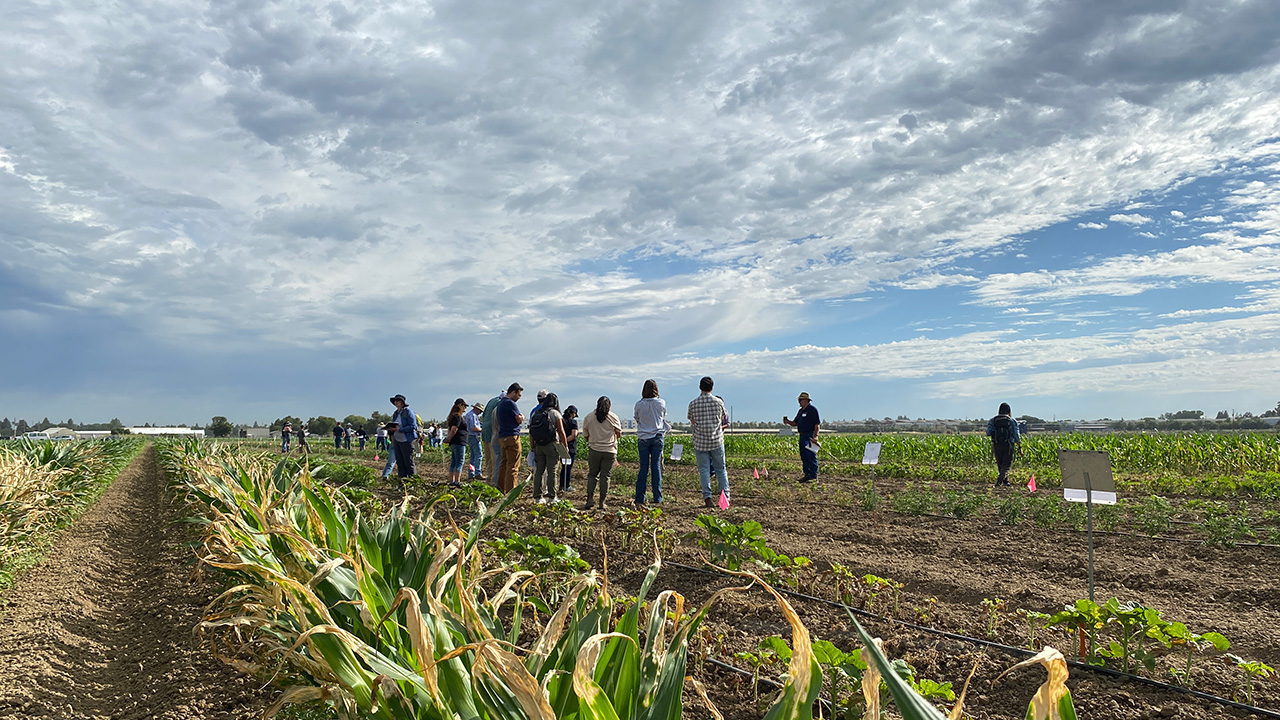
Diagnosing herbicide problems takes detective work
Field day offers examples, tips for solving the mystery

A grower applies an herbicide to his tomato plants, or thinks a neighbor’s treatment is drifting over her almond trees. A short time later, the leaves start to bleach or shrivel. Was it the herbicide? Or maybe water stress? Soil nutrients? Perhaps an insect?
Figuring out the causes of crop problems takes detective work, and like solving any mystery, it starts with knowing the signs, gathering evidence and asking questions.
The Diagnosing Herbicide Symptoms field day at UC Davis was an opportunity to see, up close, the shriveled cotton, scorched corn and dying sunflowers that can result when herbicides are applied incorrectly. Using the right herbicide – in the right proportion, at the right time and in the right field – can make the difference between a thriving crop and a financial loss.
A top take-away to avoid problems: “Don’t do stuff at night!” laughed Becky Wheeler-Dykes, a UC Cooperative Extension farm advisor attending the June 26 event to better serve growers in Glenn, Tehama and Colusa counties. “The packages look the same. People grab the wrong jug.” And then, disaster.

Instructors were Brad Hanson, professor of Cooperative Extension; and Kassim Al-Khatib, the Melvin D. Androus endowed professor for weed science; both in the Department of Plant Sciences. They were joined by John Roncoroni, a Cooperative Extension emeritus farm advisor rooted in the department’s weed science program. Attendees were a mixture of people from agriculture, industry, government officials, university researchers and Cooperative Extension advisors. The event was hosted by the Weed Research and Information Center, based in the Department of Plant Sciences.
Out in a field west of campus, visitors could see the progression of damage, from control plots with green and healthy crops to plants that looked sadder as herbicide concentrations increased. Visitors could see the patterns of damage for common foliar chemicals such as glyphosate, paraquat, and 2,4-D, as well as soil-applied herbicides from several chemical classes.
“There’s a lot of detective work,” said Stephen Chang, a master’s student in Hanson’s lab aiming for a career in Cooperative Extension. “For example, the company that makes the herbicide says there shouldn’t be a problem, but the grower says, there is a problem. This course helps with developing the skills to figure out what happened.”
It might not be the herbicide at all

Detective work and problem-solving frame the approach, Hanson explained. The cause of crop damage can be simple or complex. Like a good mystery, what appears to be a clue can turn out to be a red herring. Professionals need to draw on their inner Sherlock Holmes to observe and document symptoms, look for patterns in the plants and in the field, ask questions, gather information about the larger environment and collect samples.
An herbicidal Agatha Christie would then suggest: What if it’s not herbicide damage at all? Participants learned to consider the possibility of insects, pathogens and viruses, as well as problems with water, nutrients, soil condition and even root damage from cultivation practices.
Hanson recalled puzzling over symptoms he found in an orchard. The culprit? “A leaking natural gas line,” he said.
More resources for herbicide issues
Participants also heard from Molly Mathews, deputy agriculture commissioner from Yolo County, on how a field investigation is conducted. Lawyer Robert Davies, of Donahue Davies LLP in Folsom, outlined the basics of what happens when there are lawsuits related to crop damage from herbicide drift.
The Diagnosing Herbicide Symptoms field day is part of a larger program of education and outreach offered through the Weed RIC, said director Julia Stover-Blackburn. It was the first time the event has been offered since the COVID-19 pandemic, she added.
- For more information about field days and resources, visit the Weed RIC webpage.
- For a thorough discussion of herbicide symptoms, visit this page overseen by Al-Khatib and sponsored by University of California Agriculture and Natural Resources.
This online course follows an earlier version of the Diagnosing Herbicide Symptoms field program.

John Roncoroni, second from right, a Cooperative Extension emeritus farm advisor, explains symptoms caused by a group of herbicides that affect the photosystem or act by disrupting cell membranes. The corn, left, shows damage caused by improperly applied herbicide. (Trina Kleist/UC Davis)
Media Resources
- Trina Kleist, UC Davis Department of Plant Sciences, tkleist@ucdavis.edu, (530) 754-6148 or (530) 601-6846
